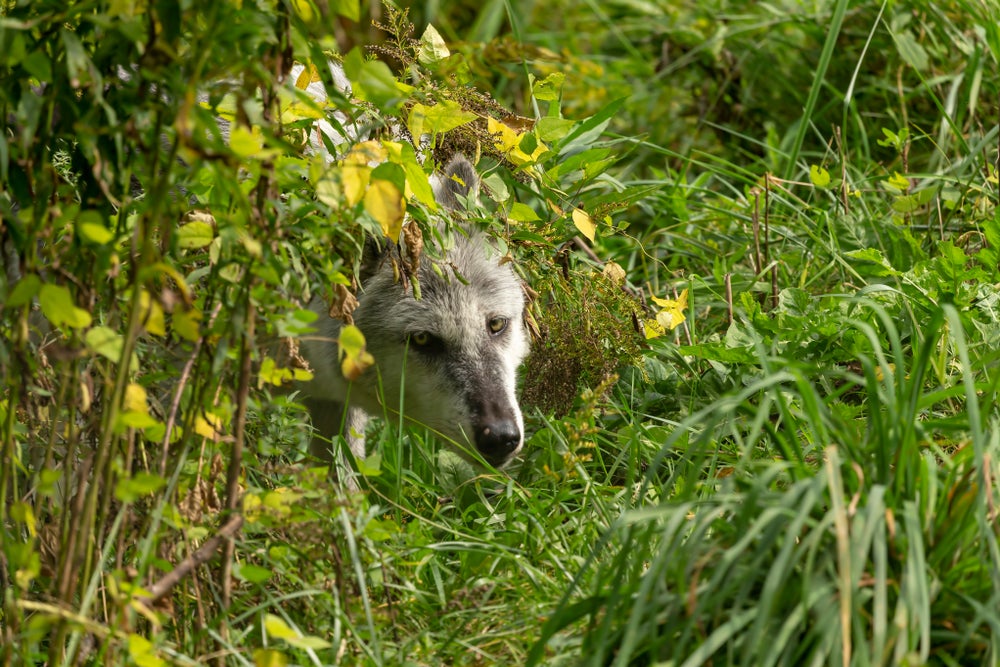Subscribe to Updates
Get the latest agriculture news and updates directly to your inbox.
Author: staff
By Julie Ingwersen CHICAGO, Oct. 27 (Reuters) – The U.S. soybean harvest was 84% complete as of Sunday and the corn harvest was 72% finished, according to a Reuters poll of 10 analysts on Monday. Rains slowed fieldwork over the weekend in the southwestern Midwest, the Mississippi River Delta and portions of the eastern Plains, but combines were rolling elsewhere as farmers continue harvesting what has been forecast as the biggest U.S. corn crop in history and a bumper soy crop. The U.S. is the world’s top corn exporter and the No. 2 soybean supplier after Brazil. Analyst estimates of…
Wisconsin’s wolf population has rebounded from extinction to an undeniable conservation success. But lately, it feels more like a horror story than a success story. When wolves prowl close to livestock, the victims are not faceless numbers in a report. They’re our farmers — real people left to face the bloody aftermath in their pastures while Washington bureaucrats sleep soundly miles away. Our farmers’ mental health, livelihoods and sense of safety are on the line. It’s time to end this nightmare. It’s time to delist the gray wolf in Wisconsin and restore management to the state, where decisions can be…
Key Points Four straight weeks without data: USDA’s Crop Progress report was again not released due to the ongoing government shutdown, marking a full month without official progress and condition updates.Harvest pushing ahead: Private estimates suggest corn harvest reached roughly 72% and soybeans 84% nationwide by Sunday.Field updates from agronomists: Despite the data blackout, boots-on-the-ground reports from agronomists paint a clear picture of rapid harvest advancement across the Corn Belt. The USDA was expected to publish the 30th Crop Progress report of the growing season today, but the report was not published for a fourth week because of the continued…
Image by Nokwan007, Shutterstock Top Third Ag Marketing helps farmers become better agricultural marketers with the goal of marketing crops and livestock in the top third of prices. Mark Gold and his team provide AGDAILY.com with the latest information and a look ahead in their audio commentary. Listen here! https://www.agdaily.com/wp-content/uploads/2025/10/ag-daily-2025-10-27.mp3
By Rozanna Latiff and Danial Azhar KUALA LUMPUR, Oct. 27 (Reuters) – China pressed on Monday for stronger economic ties and more open trade at a regional summit in Malaysia dominated by the shadow of steep U.S. tariffs after proceedings attended by President Donald Trump. In a flurry of deal-making on his first stop during a five-day tour of Asia, Trump oversaw the signing on Sunday of an expanded ceasefire pact between Cambodia and Thailand and four regional trade deals. None of those framework deals reduced steep U.S. tariffs on Cambodia, Malaysia, Thailand and Vietnam, the White House said, though they left room for some exemptions. “Our message to the…
On her family’s Idaho wheat and alfalfa farm, Gen Z creator and agricultural educator Saydee Longhurst has turned everyday fieldwork into scroll-stopping short videos — and, in the process, has helped thousands connect with agriculture on a personal level. “I see myself probably as a documenter,” Longhurst said. “I treat social media like my own little virtual diary. And if people watch it and like it, that’s great, but more so like, I’m posting about what my thoughts are, what I would want to look back on and remember about whatever was happening.” Longhurst grew up in the southeast part…
On Sunday, Ambassador Jamieson Greer announced that President Donald J. Trump has secured new Agreements on Reciprocal Trade with Malaysia and Cambodia and reached frameworks for future agreements with Thailand and Vietnam. The administration says these efforts are part of an ongoing push to expand market access for U.S. goods and strengthen economic ties across Asia. “President Trump continues to secure historic trade deals to lower tariffs on U.S. exports and eliminate trade barriers, strengthening America’s economic and national security interests,” said Ambassador Greer. “These landmark deals demonstrate that America can maintain tariffs to shrink the goods trade deficit while…
As of 9 a.m. CT, December corn was up 5¼¢ at $4.28½ per bushel. January soybeans were up 22¾¢ at $10.83 per bushel. December CBOT wheat was up 14¼¢ at $5.26¾ per bushel. December KC wheat was up 12¢ at $5.13½ per bushel. Just before 9 a.m. CT, December Minneapolis wheat was up 7¢ at $5.64. “Soybeans are trading sharply higher this morning following the framework trade deal between U.S. and Chinese trade negotiators,” said the Commstock Report this morning before day trade opened. “Corn and wheat are also trading solidly higher. “After two days of intensive talks in Malaysia,…
1. Soybeans, Grains Surge on Expected China Deal Soybean and grain futures jumped overnight after the U.S. and China agreed to a potential trade deal that may be finalized when Presidents Donald Trump and Xi Jinping meet later this week. Negotiators hammered out deals TikTok’s U.S. operations and rare-earth minerals, Treasury Secretary Scott Bessent said. China is expected to resume purchases of U.S. soybeans, while Washington likely will not put a 100% tariff rate on Beijing, he said. Trump and Xi are expected to meet on the sidelines of an economic forum in South Korea on Thursday. Bessent said the…
We’ve heard a lot about trade this year. The U.S. government is negotiating with multiple countries to reach trade agreements. New tariffs and threats of new tariffs have sparked concerns of reciprocation and loss of markets for U.S. agricultural commodities. But how much does all that really matter? What do farmers stand to lose? Roland Fumasi, head of RaboResearch Food & Agribusiness for North America, described the nightmare scenario for global trade of agricultural goods. “Ultimately, the worst-case scenario would look something like: You have trading blocks around the world — basically, a group of countries that are friendly traders, and…




:max_bytes(150000):strip_icc()/Markets-8-Soybeans-up-corn-down-10-39d51bc414e3404d8a298ad3f60968ec.jpeg)


:max_bytes(150000):strip_icc()/Kevin20Corn-e17ec977e7104971846f8df263f67b96.jpg)

:max_bytes(150000):strip_icc()/49035906658_4a903ee8ca_o-9fd78e3ed1394b109c18f45fa6890b72.jpg)

:max_bytes(150000):strip_icc()/china-america-flags-1-2000-ef792f3551ca4afdb85bb499e24dbdc4.jpg)


:max_bytes(150000):strip_icc()/Markets-1-Soybeans-field-dramatic-up-15-656c251c883c487482ac1bc7447ae203.jpeg)
:max_bytes(150000):strip_icc()/Updated3BigThings-2-soybeans-harvest-red-3-e0163cce0f5144f89e676951fe1ac5ff.jpeg)
:max_bytes(150000):strip_icc()/GettyImages-157776637-4fcfb07affde486b8500272b9a7ed1a6.jpg)